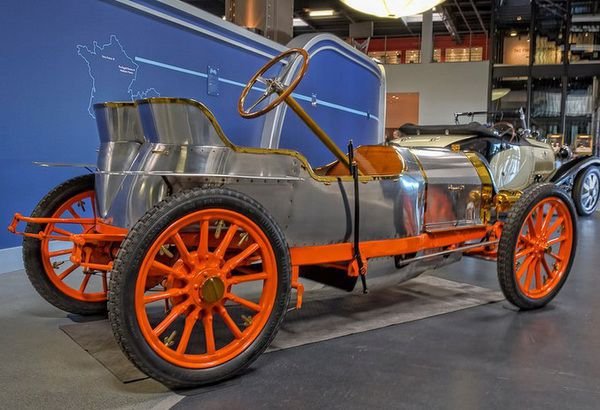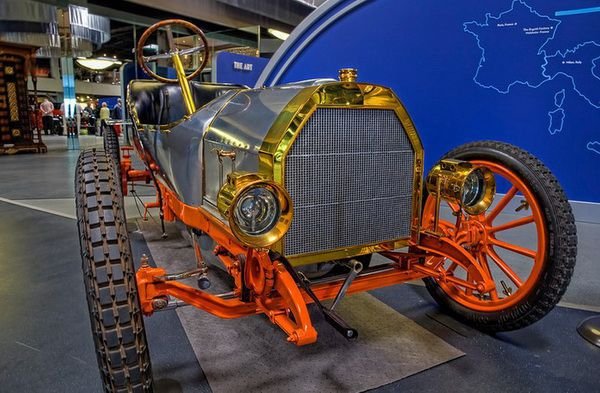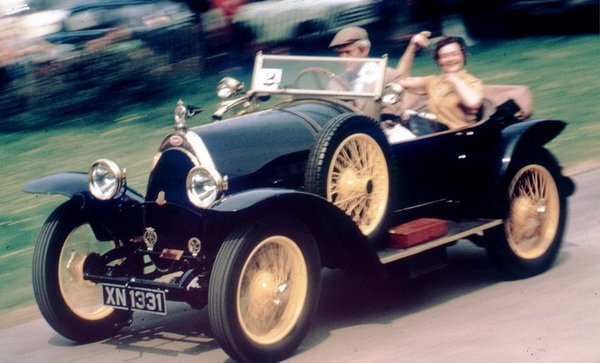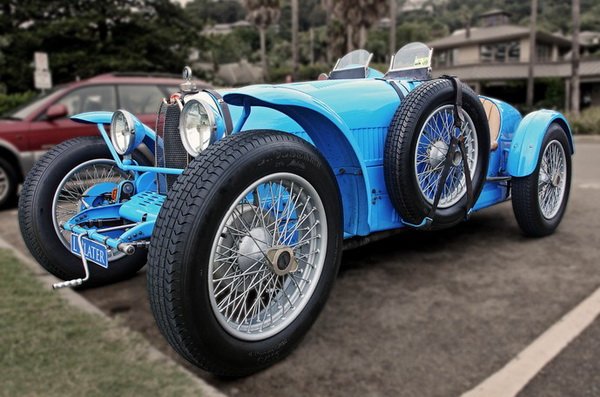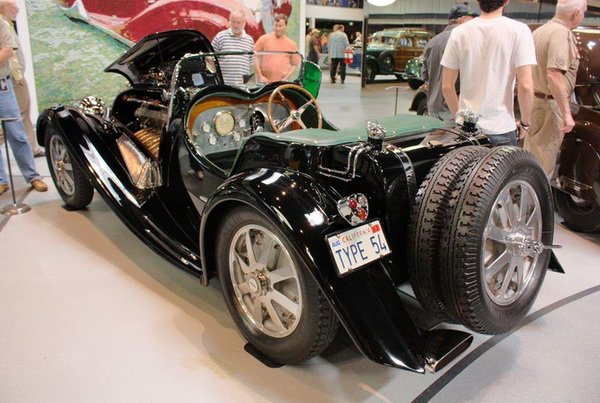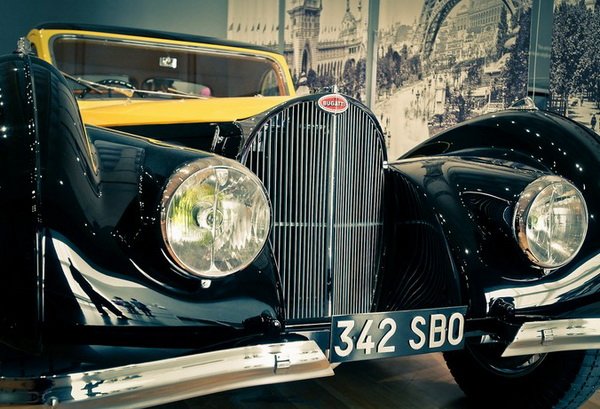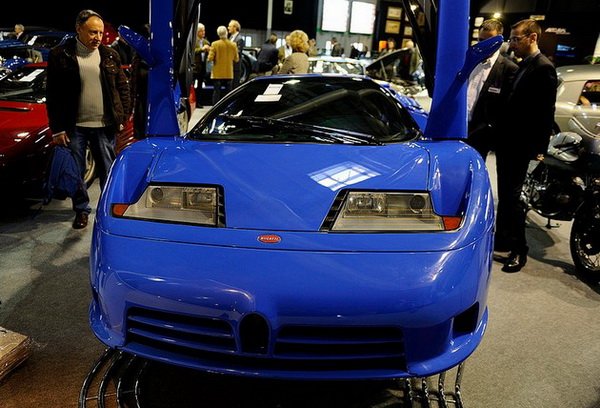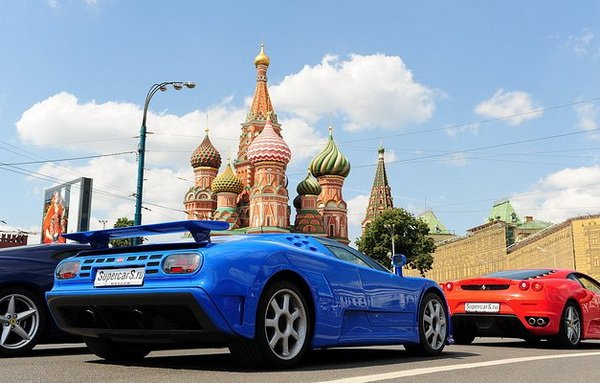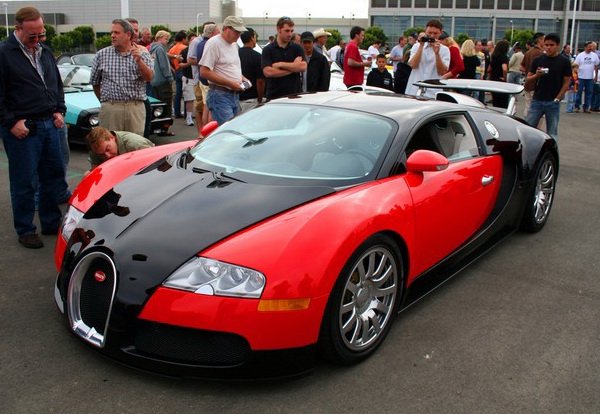The History Of Bugatti
1909 is officially considered the starting point of the Bugatti brand history. It was then, thanks to the generous funding of Ettore Bugatti opened his first plant in the town of Molsheim. In its debut year for the company, the Bugatti model line-up consisted of four cars. The first copies were quite ordinary vehicles, but it was already noticeable that the head of the company tends to the sports style.
In 1914, there were models Type 16 and Type 18, the volume of engines which increased to five liters. These cars quickly gained popularity among the rich and famous, which, of course, was only in the hands of the designer. In addition, the car Bugatti Type 18 successfully participated in the prestigious American race "Indianapolis-500" in 1914 and 1915, went down in history, significantly raising the reputation of Bugatti — the car was valued very highly and perfectly bought. However, the First world war violated all the plans of Ettore Bugatti, who had to sell a license to manufacture cars company Peugeot.
The Golden era in the history of Bugatti
The war ended, and the enterprising industrialist Bugatti opened production of the cars in the territory of France. Not without reason is considered that in 1919 began the Golden era in the history of Bugatti, and its products have become fully consistent with the"luxurious style with notes of sportiness." Chic, comfortable cars with incredibly powerful engines at that time shone on all the motor shows in Europe and North America.
At the same time, the company's cars continued to participate in sports competitions, achieving significant success there. Star hour racing division of the company struck in 1924, when the second stage of the European Grand Prix Type 35 took all places from the first to the fourth. Sales of racing cars went up, and the company once again strengthened its reputation. The name Bugatti has become synonymous with luxury, technical strength and exclusivity.
Since the early 1930s, the company has had all its own records for sales and production of new models. New products designed for the mass consumer were released every six months, and each of them was technologically a head higher than the previous one. The company's products has been incredibly with the dynamic characteristics and motor power. For example, from 1931 to 1934 produced racing Bugatti Type 54 with an eight-cylinder engine capacity of 5 liters and 300 horsepower. In the track record of this car countless victories in the competition, as well as the speed record of the time — more than 210 kilometers per hour.
Another model, one of the most beautiful and rare — Bugatti 57S — was created in several versions: a racing car, a sports coupe and even a luxury double "Grand Turismo". Its technical characteristics are impressive: the engine with a working volume of 3.3 liters was equipped with a dry sump lubrication system, and the initial power was 170 horsepower. The engine was subsequently upgraded by installing a mechanical compressor, which increased the power to 210 forces. Bugatti 57S was a real piece-built supercar — from 1936 to 1939 the company produced only forty one car.
It was the model of the time is of particular interest to collectors. The most popular version of the 57S Atalante is a luxury two-seater coupe, made in seventeen copies. And for the cars which have remained up to now ask very serious sums. So, six years ago at the Pebble Beach exhibition the car Bugatti 57S Atalante of 1939 of release was sold for 8 million dollars. And in January 2010, exactly the same model in 1937 from the auction Bonhams Retromobile in Paris went for 3.5 million euros.
Inglorious fall
At the end of the Second world war in the history of Bugatti came hard times: cars have lost their competitiveness, the quality of their strongly fallen. After the death of Ottore Bugatti in 1947, his son Roland tried to produce new models, but the company suffered some losses — the post-war market was not ready for the twelve-cylinder "monsters", besides very poor quality. The last hope of Roland Bugatti was the Type 451 V12, which was positioned as a competitor of the fastest Ferrari. Work on the car began in 1959 and lasted until 1963, when it became clear that the company has no more money. This was followed by the sale of the company Hispanu-Suiza, which ordered to completely stop the production of machines.
The triumphant revival
And only after almost thirty years after the fiasco began a slow revival of the company. In 1994, the public presented a prototype Bugatti EB 110-a rapid supercar with a luxurious interior and all available at the time options. For financial reasons this model has not been released, but the owners of the company decided to try their luck in motor sport. And on this path for Bugatti everything turned out to be much more successful — the sports version of EB110S performed well in 24-hour races in Lehman and for several years was consistently in the top five.
In 1998, Bugatti joined the Volkswagen group, which undoubtedly had a positive impact on the company, financial support and technical level of the German giant opened up new opportunities for Bugatti. Model Veyron, which appeared at the beginning of the XXI century, Bugatti returned to its former reputation and popularity.
Made in an absolutely exclusive style of the brand-incredible power combined with luxury interior and futuristic appearance — 1 101-strong supercar price of almost a million euros began to show an excellent level of sales for cars of this class.


